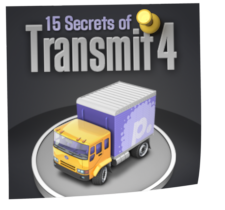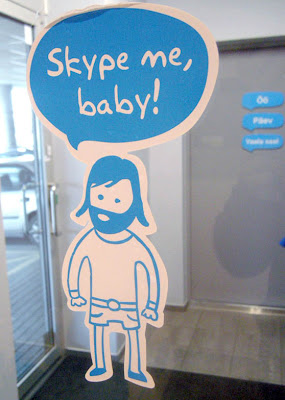Windows Phone 7 - Microsoft Strikes Back with a totally new OS and the Metro UI

It's only been a few weeks since I starting using my new smartphone with the latest Windows Phone 7 operating system (aka "Mango"). Windows Phone 7 is Microsoft's latest attempt at cracking the smartphone market, something of a surprise since many of us thought that Microsoft had given up on the mobile/smartphone market (or the market gave up on it), thanks to the lackluster success of the Windows CE/Windows Mobile platform and the dominance of Apple's iOS and Google's Android. Indeed, as of late 2011, Windows marketshare for smartphones has fallen to only about 2% of total, with the smartphone universe being almost completely dominated by Apple and Google. But Microsoft is back with a TOTALLY new operating system this time and here's my chance to review it and compare it to some other phones I have owned.
It's strange to think of Microsoft of an underdog, but things have changed very quickly in the fast-paced mobile operating system world in the last couple of years. Only 3 or 4 years ago the market for mobile phones was dominated by Nokia, and then later by RIM, both of whom took turns in the number one spot but seem to have missed the smartphone revolution of the last 2 years and are now struggling to stay alive in a market dominated by iOS and Android. Microsoft have barely been a player in smartphones up until now, but the folks at Redmond have definitely not just been sitting around twiddling their thumbs while Apple and Google have built massive empires at the expense of their rivals. Microsoft have been working very hard on their latest Windows Phone OS and it may just be the thing that brings Microsoft back into the arena as a major player.
Cutting to the chase, let me start by saying that I really like my new Windows 7 Phone. In fact, I really, REALLY like it. Before I go into the reasons why, I want to preface this review by saying that I have also owned iPhone and Android devices (both of which I like), and am primarily a Mac user AND a second-generation iPad owner. In fact, I am such a long time Mac user, that I would have never considered a Windows phone were it not for a rather unexpected set of circumstances that led me to trying out some alternatives to Apple.
My journey into seeking an alternative to the iPhone leaped into reality one day when I left my trusty 3GS on a bus by accident. It was my first smartphone and I had owned it for about a year and a half before it got lost. Despite some nagging issues I had with the iPhone, it was a good phone but I was definitely thinking of trying out an Android even before I lost it.
The biggest problem I had with the iPhone was the issue of jailbreaking and being forced to buy an unlocked phone in the first place because of the exorbitant price of unlocked iPhones without a contract. This forced me to buy a locked phone and jailbreak/unlock it using third party hacking tools. Even though jailbreaking an iPhone is not that difficult, the idea that you have to hack the software every time you want to upgrade your OS, and rely on a group of underground hackers to provide you the tools to do it built up a lot of frustration in me and general resentment towards Apple. Other things I also didn't like were the small screen, which made it nearly impossible to type on those tiny keys without making glaring typos almost every time and the fact that the iPhone only has one navigation button. You have to use this single button for almost all primary navigation on the device and it sucks. Why can't the iPhone have a back button as well like other smartphones from other companies?? Too many clicks needed with just that one button to navigate around. I would kill for a dedicated back button on the iPhone.
Despite my frustrations with the iPhone, because of the incredibly high cost of getting a new one (900€ for an unlocked iPhone 4 in Estonia!!!), I opted instead for a much cheaper Android phone as a replacement and eagerly embraced the new and exciting world of Android with an open mind and a happy wallet.
The phone I decided to replace my iPhone with was an LG P500, a cute little Android phone that only cost me 180€ for a brand new, UNLOCKED model! It wasn't a high-end phone but it did everything I needed and didn't cost more than a new MacBook Air! The initial joy of having a real, factory unlocked phone after having to deal with the nonsense of jailbreaking was totally liberating! Google was my new hero and on top of that I found the Android OS to be fresh and "open".
My new phone cost around 1/5th the price of a similar unlocked iPhone, but it was about 90% as good as my previous iPhone, in my opinion. In fact, the only thing I didn't really like about my LG phone was that the screen was even smaller than the iPhone and the processor was slower (this was one of the very lowest-end Android devices on the market at the time). While I was OK with the LG, I eventually started to envy my friends with their snazzy Samsung Galaxy's and huge 4" screens with 1Ghz+ processors. I would have probably upgraded to a bigger phone and stuck with Android were it not for the fact that I got a GREAT deal on a Windows phone :)

Enter the Samsung Omnia 7 - and it didn't take me long to start liking my new Windows 7 smartphone. Aside from the much bigger screen (4.0" on the Samsung), the very first thing I noticed compared to my previous phones is how pretty the OS looks. Whoever designed the Metro UI (the square, grid-based system used in Windows Phone and the upcoming Windows 8) clearly has a very strong appreciation for clean, modern graphics and typography because the typefaces used and the classic grid-based presentation used in the Metro UI look terrific. As someone with a design background, I've always been drawn to Apple products but in the case of Windows Phone, Microsoft have finally entered the world of modern, well-crafted, visually appealing user interfaces that graphic artists can really admire.
What really strikes me about the new UI is not only the fact that it is genuinely beautiful, but also that it is totally minimal, understated, and yet practical and intuitive at the same time. Information is reduced to basic lines, squares and grids, but it all flows elegantly into a minimalistic experience that is modern, attractive and eminently functional without being pretentious. I imagine there are people who will find Metro too "boxy", but I think it's right on; Microsoft have done a great job in getting designers to build the look of their new OS rather than programmers without any sense for user experience.
Speaking of programmers, the Metro UI for both Windows Phone 7 and the upcoming Windows 8 desktop is built in HTML5, CSS and JavaScript. Web developers like myself can now build both applications and user interfaces for Windows phones using familiar scripting languages and open standards without having to know C# or C++ (hurray!). Check out the free Developer Preview of Windows 8 which includes Visual Studio 11 and the Metro SDK for building Metro style apps with HTML/CSS/JavaScript for both mobile and desktop environments. BTW, here's a good video from Microsoft's Windows 8 Developer Conference, introducing some of the ideas behind building Metro style apps for Windows 8 (which also applies to Windows Phone).
A major part of the Windows Phone 7 philosophy is the concept of "putting people first". In fact, the official Windows Phone motto is "Put people first." and the Metro UI follows through with this idea by integrating various social services and applications into a seamless experience. As such, address book, photo galleries, chat capabilities, SMS, calendar, email, Facebook, Twitter, LinkedIn, etc., are all presented in a hub-like manner, accessed through inter-related "live" tiles where people (ie. your friends and contacts) remain at the center of focus rather than individual applications.
On the surface this whole "people first" idea might sound a bit like some kind of shallow marketing campaign, made up by an advertising agency who have never even used the OS, but I'm happy to report that Microsoft have actually succeeded really well in living up to the marketing hype behind this concept - it works!

One of the very first clues you'll notice regarding the "people first" approach is the prominently placed People tile, which itself is a live portal into virtually any information available to you about your friends and contacts. One of the People tile's main functions is to serve as your address book, but unlike address books on other mobile platforms, this one compiles live information on your contacts from every service you give it access to and puts it right there within each person's profile entry, just a couple of clicks away. Not only can you call your contacts or send them email or SMS messages right from their profile, but you can also write directly on their Facebook wall, see their photo albums on Facebook or Windows Live, read their recent Facebook posts (and comment or like them) or Twitter and LinkedIn Updates, see their home or work addresses on a map, view their birthday, find out who their significant other is, etc. The coolest part though, and I admit that this is mostly cool for hard-core Facebook users like myself, is that it pulls all the information about your friends from Facebook (assuming you allow it) and even populates their profile pictures with the profile pics from Facebook. Now I realize that not everyone is a Facebook fan and may not appreciate this feature, but I have about 1,000 friends on Facebook spread all over the world and Facebook is the best way for me to keep tabs on so many people in so many different places. Privacy aside, Facebook is great for this and the deep integration in Windows 7 with Facebook is really nice.
I don't really know how well any of this will work for people that don't use Facebook, but I know that Windows Phone also integrates with Twitter and LinkedIn and I suspect that the same level of integration with other social services will continue to evolve as Windows Phone 7 matures. In contrast, Android's syncing with my Gmail contacts seems much less elegant and practical in terms of the way I actually use the phone and interact with my contacts.

The heart of the Windows Phone 7 interface is the Metro UI, which presents you with "live" tiles instead of just application icons. Metro tiles are bigger than traditional application icons so they can display more information and thus update constantly with data so you can see quickly at a glance what is going on without having to drill deeper into the UI by launching a separate app. For example, the Calendar tile shows the latest calendar events for the day (yes even events from Facebook). The People tile constantly updates with photos of my friends while they doing something in cyberspace, or interacting with me via SMS, phone calls, etc. - a neat reminder of who's the most active of your friends. The Foursquare tile shows who's leading in checkins and the Pictures tile cycles automatically through photos in my camera roll. These are just a few of the things that happen with live tiles, and don't forget that you can move these around, pin them to your start screen, or remove them all together.
With all this inter-related info available on the phone, it wasn't until I actually started using the phone extensively that I realized that the information presentation works really well in practice. The more I use the phone the more I appreciate the simplicity and straight-forwardness of the UI and ability to see the information that is most important where I want it. Besides that, it is a very refreshing change from the familiar Apple/Google approach, which though it works great on those platforms, is not the only way to build a smartphone UI. I think that Microsoft have come up with something pretty original in its own right but more importantly, it works as promised in actual practice and grows on you the more you use it. Kudos to them for thinking different ;)
Regarding apps for Windows phone, they tend to look a lot different here than on iOS or Android. Naturally it's up to the developer to design the look and feel of their app but some apps look so different (Like Facebook and Foursquare for example) that it takes a while to figure out how they work. Generally they tend to be more text based than graphic based, using Metro's slick fonts and CSS3 transitions. Whether this works is up to you but it took me a while to get used to the UI for the Foursquare app for example, and I'm still not sure I like it as much as the version on the iPhone. In any case, the Windows Marketplace has plenty of apps available -- not as many as Apple or Google -- but the number grows daily and I'm sure that developers will adapt well to Windows 7 given the ease of creating apps and working with the new API's and Metro SDK. There's one big hole in the marketplace without Skype, but we are working hard on getting this to the Windows phone platform and it will be there before too long!
I'm not a big game player but you can access games through the Xbox Live tile and even access your Xbox Live games and settings, as well as interact with other players through Xbox Live. My custom Xbox avatar shows up in the Xbox Live tile and dances around to entertain me, even falling down if I shake the phone hard enough :D. So far I've only added a couple of games but they seem to work great.
For the moment I'm really enjoying my new phone and can't seem to put it down. Regarding the hardware, Samsung's Super Amoled screen is just amazing and makes the whole experience that much better. The Omnia 7's camera is kind of a mixed bag though, in full daylight it performs nicely, with good colors, but indoors it has real problems with autofocus and rarely takes a sharp photo. It also suffers from shutter lag and poor feedback compared to real dedicated cameras. Despite this, I'm mostly very happy with the phone and consider it a keeper. Microsoft also have a free Windows Phone 7 Connector for Mac that allows you to sync your iTunes and iPhoto libraries to your Windows phone so this makes it easy for a Mac user like myself to live with it.
While I've only had the phone for about a month as of this writing, there have already been 2 significant OS updates and with the last one I noticed some big improvements and new functionality. The original version of the OS that shipped was a pretty early production version and was impressively stable, especially for a new OS. Android on the other hand always seemed to have some rough spots and even still seems very much a work in progress.
All in all, I'm totally happy with my new Windows phone. It's not the perfect operating system but I think it probably works better for me than any other smartphone I have used. I'm eager to see how the market receives the new version of Windows phone and how Apple and Google will respond to it. My guess is that Microsoft will do well and that more competition will give everyone better smartphone options in the long run
Disclaimer: The opinions expressed here are entirely my own personal opinions and may or may not reflect those of my employer.







